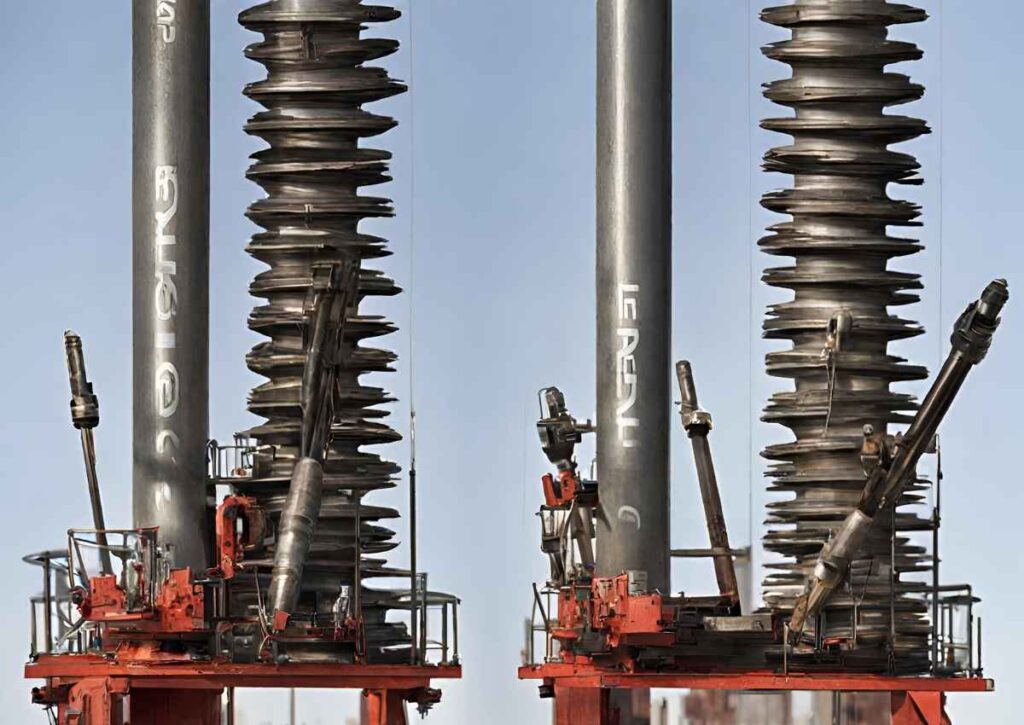Drilling stem testing (DST) revolutionized the oil and gas exploration industry, offering a crucial insight into the potential of subsurface formations.
Let’s dive into the history, procedure, and applications of DST, exploring how it maximizes efficiency in hole exploration.
History and Evolution
In the 1920s, E.C. and M.O. Johnston pioneered the first commercial drill stem tester in El Dorado, Arkansas, marking a significant milestone in well testing technology.
The introduction of wireline testing by Schlumberger in the 1950s further enhanced the efficiency and accuracy of formation evaluation.
About Drilling Stem Testing

DST serves as a vital procedure to assess the pressure, permeability, and productivity of geological formations during well drilling.
By isolating and testing formations, DST provides valuable insights into reservoir characteristics and the presence of hydrocarbon resources.
The procedure involves deploying a test bottomhole assembly (BHA) equipped with packers, valves, and recorders to measure pressure and temperature.
Applications of DST
DST finds applications in both open and cased hole environments, catering to various exploration objectives.
In cased hole stimulation, production packers are deployed above the zone of interest to test flow through casing perforations.
Conversely, open hole testing offers an economical solution to determine reservoir potential before casing, utilizing inflatable or compression-set packers to isolate zones of interest.
Alternate Procedures and Technology

Beyond traditional DST, alternative procedures such as fluid loss control, well stimulation, and combined DST and TCP techniques further enhance reservoir evaluation.
Additionally, STEM drilling emerges as a cutting-edge technology for precision hole drilling in hard materials, offering high metal removal rates and minimal thermal or mechanical stresses.
Procedure and Results
During a DST operation, drilling mud is replaced with the DST tool, and packers are inflated to isolate the test section.
A valve is opened to equalize pressure, allowing formation fluids to flow to the surface for analysis.
Despite challenges in low permeability formations, DST provides valuable data on fluid volume and flow rates, aiding in reservoir characterization.
Advantages of STEM Drilling

STEM drilling stands out as an innovative technique for precision hole drilling, especially in aerospace and industrial gas industries.
With capabilities for shaped and simultaneous multi-hole drilling, STEM drilling ensures minimal tool wear and superior machining quality, making it ideal for complex turbine blade manufacturing.
In Conclusion
Drill stem testing continues to play a pivotal role in the exploration and evaluation of subsurface reservoirs, driving efficiency and precision in hole exploration.
From its humble beginnings in the 1920s to the adoption of advanced technologies like STEM drilling, DST remains indispensable for the oil and gas industry, unraveling the mysteries of the underground world.
FAQs
What is the primary objective of a drill stem test (DST)?
The primary objective of a drill stem test (DST) is to evaluate the pressure, permeability, and productive capacity of a geological formation during well drilling, providing critical information about reservoir potential and hydrocarbon presence.
How does STEM drilling differ from traditional drilling methods?
STEM drilling, or acid electrolytic drilling, utilizes high electric currents passed between an electrode and the workpiece through an electrolytic material removal process.
Unlike traditional drilling, STEM drilling creates minimal thermal or mechanical stresses, enabling precision drilling in hard corrosion-resistant materials with shaped multi-hole capabilities.
What are the key applications of cased hole drill stem testing?
Cased hole drill stem testing involves deploying retrievable production packers above the zone of interest in a well casing to assess flow through perforations.
This method is commonly used for cased hole stimulation, offering insights into reservoir pressure, productivity, and fluid characteristics.
How does open hole drill stem testing contribute to reservoir evaluation?
Open hole drill stem testing is performed before casing is run, providing an economical method to determine reservoir potential, pressure, and permeability.
By isolating zones of interest using inflatable or compression-set packers, open hole testing offers valuable insights into reservoir characteristics and economic viability.
What are the advantages of using drill stem testing in the oil and gas exploration industry?
Drill stem testing offers several advantages, including the ability to assess reservoir potential in real-time, optimize well completion strategies, and minimize risks associated with uncertain reservoir conditions.
Additionally, DST enables informed decision-making regarding production strategies and reservoir development plans.
Also Read
Directional Boring: Innovating Underground Drilling









